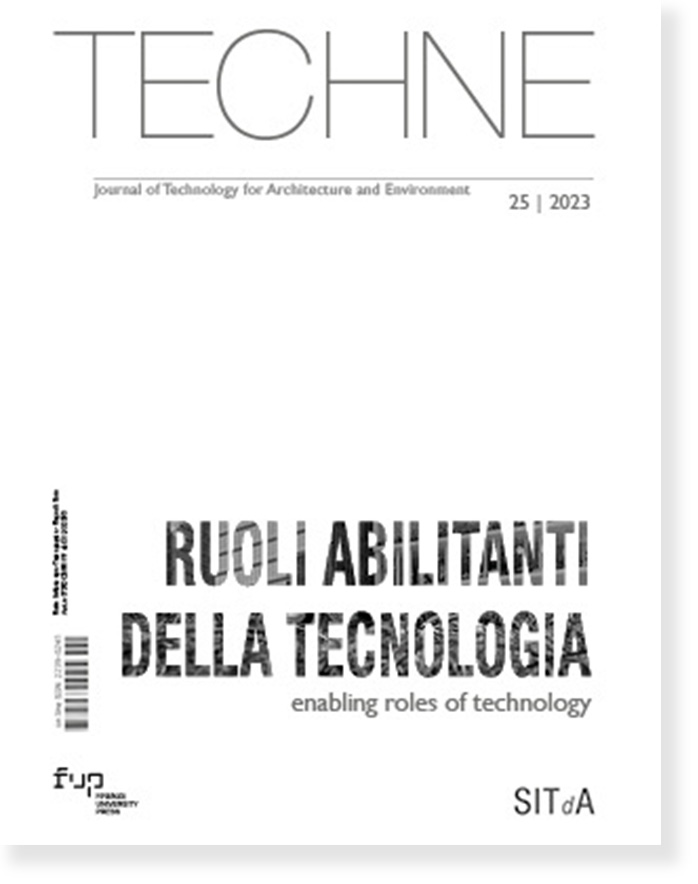Published 2023-05-30
Keywords
- xxx
How to Cite
Copyright (c) 2023 Elena Mussinelli

This work is licensed under a Creative Commons Attribution 4.0 International License.
Abstract
The article examines the opportunities as well as the critical issues arising from an increasingly pervasive and transversal use of hard and soft technological innovation, and in particular of the so-called "enabling technologies" (Key Enabling Technologies-KETs) which, in recent years, have found many opportunities for transfer to the construction sector and the field of architecture.
On the one hand, it is described how these technologies are fostering the spread of more advanced and efficient operational and management models, both by acting on production and decision-making processes, and by activating new vertical and horizontal supply chains as well as new economic, environmental and social value chains. On the other hand, a number of critical scenarios are emerging that affect both the figure of the designer and the character of the urban landscape and the image of architecture. These include the lack of awareness of the transformations that have already taken place, with some questionable effects, in the transfer of KETs to particularly complex fields such as those of architectural design and the transformation of the built environment.
The ongoing extension of the limits of what is made possible by technological innovation has in fact led to even contradictory design outcomes, especially when the eye of technology replaces the eye of man, and when the extreme specialisation overdetermines planning and design choices with a partial and segmented understanding of problems. It is therefore necessary to effectively combine the technological contribution, which historically innovation has never failed to provide designers with, with a sensitive and responsible approach, essential especially in the Italian and European contexts, where the quality of places and their values are mainly made up of the emergence of ancient stimuli, of the emotion of things that come from afar, of spaces and architectures arranged by truly intelligent hands.
Downloads
References
- ----






